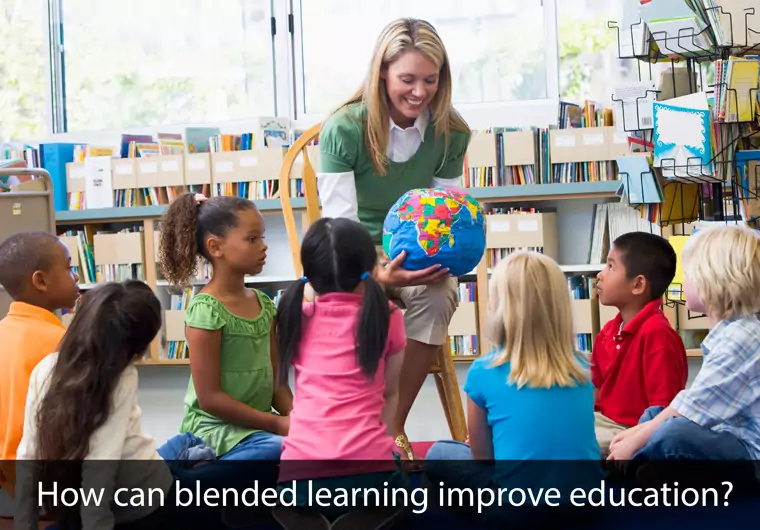How Blended Learning Can Improve Education

As massive open online courses (MOOCs) and other digital options for education become both more abundant and of higher quality, the landscape of education is sure to change. How exactly digital education tools will be implemented into education programs is not yet clear. Some believe that digital offerings will take over education and replace traditional universities, while others feel that the current digital trend will fade, leaving traditional universities to continue their hundreds of years of dominance in education. Perhaps the most likely outcome, however, falls somewhere between these extremes and will involve the incorporation of new resources into older techniques for learning.

One way this outcome could be implemented is through blended learning, which involves flipping the classroom. In this process, students learn material at home instead of in the classroom and do what used to be “homework,” in class, where problems are solved with the guidance of an instructor. This strategy would leverage the power of digital learning to allow students to watch lectures from home and use classroom time to capitalize on the value of teachers, allowing students to ask questions and allowing teachers to assess students’ performance in real time.
An example of a blended course is a course called Advent of the Atomic Bomb, offered at Colgate University. In addition to didactic information, the online aspect of the course also provides the opportunity to interact with other students. An added benefit of this course is that different generations participate in the course, so younger students are able to hear about events relevant to the course from people who may have experienced the actual events. According to the instructor of the course: “You talk with someone who was on a navy ship heading for Japan when the bombs were dropped, and it takes on a completely different dimension.”
The Advent of the Atomic Bomb course is illustrative of blended learning occurring within a single course. However, blending learning could also involve separating courses or topics whose content is more easily learned with traditional lectures from those that may benefit from digital resources. For instance, online material has repeatedly been shown to facilitate medical education. Determining the best ways to use the potential of the Internet and digital resources will take years of systematically collecting data and the help of researchers, teachers, and software developers. Analyzing the effects of different teaching strategies is difficult because of the number of variables involved and the different methodologies for assessing outcomes. This phenomenon is exemplified by contradictory reports on the impact of MOOCs on academic performance. Blended models may thus be most effective after controlled research has identified the valuable aspects of traditional teaching and those of newer techniques that rely more on digital platforms.
As they are currently used, MOOCs may be most useful for those with a high level of motivation to learn the relevant material because those are the students that are most likely to meticulously keep up with courses, use their available resources, and participate in discussions with other participants. This outcome is not out of line with the original intention of MOOCs: to teach as many people as possible. However, as we shift toward emphasizing the quality of education material rather than focusing completely on access, the content and delivery of MOOCs will likely evolve. It may be the case that in the future, rather than throwing together educational resources that already exist – such as classroom curriculum and MOOC videos, we may instead build new dynamic courses from the ground up so that we minimize inefficiencies and implement evidence-based strategies for learning.
Though much of the research into how to develop effective MOOCs is targeted toward educating the public and the relationship between MOOCs and academic institutions, MOOCs will likely prove highly valuable in the private sector as well. There are a number of purposes for which corporations are beginning to implement MOOCs, the most common of which is corporate training. As MOOCs are optimized to become highly effective e-Learning tools, their customization by corporations will allow these companies to efficiently and uniformly train their employees.
Other articles on blended learning: